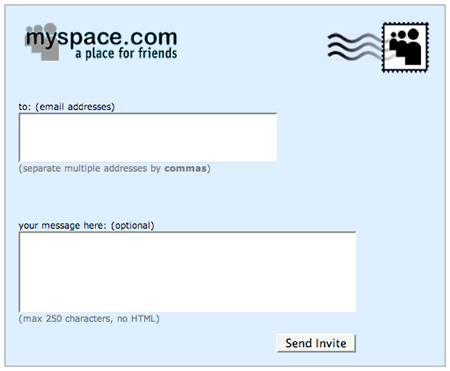August 7th
Interface Compare: Inviting Friends on MySpace & Facebook
I’m introducing a new type of post here at Bokardo called “Interface Compare”. I’ll use it to compare interfaces from different services to highlight interesting things designers are doing (or not doing). The first installment is comparing the Invite screens on MySpace and Facebook.
MySpace Invite Screen

The interface for this is pretty straightforward. You can type in the email addresses of all the friends who you would like to invite, separated by a comma. You can also add a message to the invite if you want.
Facebook Invite Screen

You’ll notice one big difference between the Facebook and MySpace invite screens. Facebook allows you to import addresses from various third party email systems. You can grab your contacts from webmail services such as Gmail, Yahoo Mail, and Hotmail. You can also import contacts from your desktop mail applications as well.
Continue Reading: Interface Compare: Inviting Friends on MySpace & Facebook